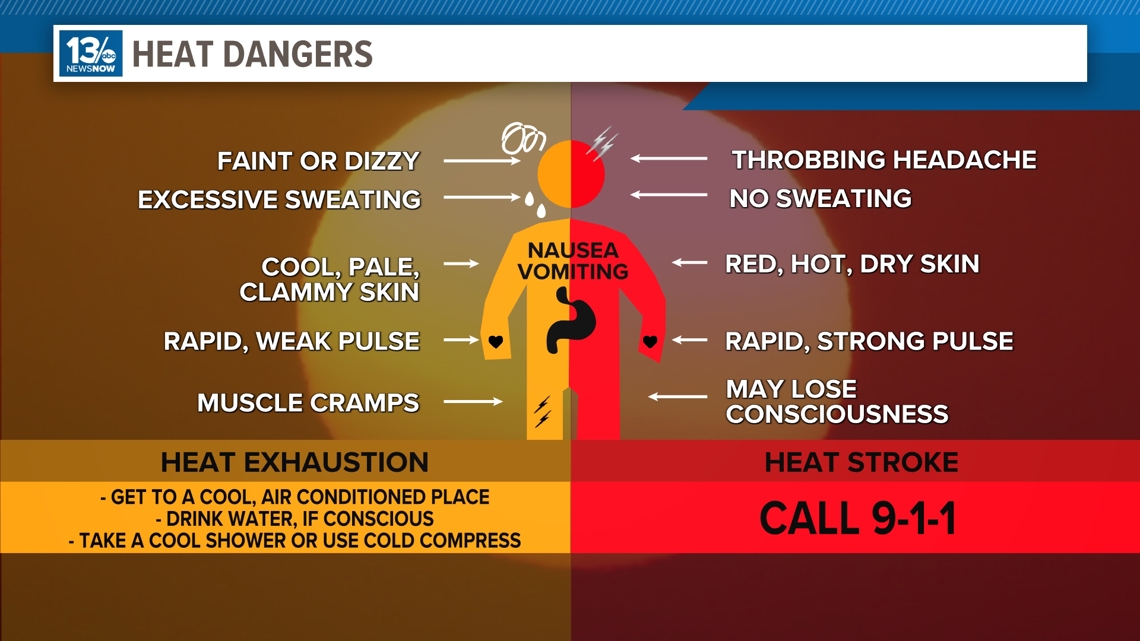NORFOLK, Va. — With temperatures consistently above the 80s and long-range forecasts showing the possibility of multiple 90-degree days, our attention turns to the potential for heat illnesses.
Let's talk about the two types of heat dangers and the similarities and differences between them.
When exposed to high heat, people can experience heat exhaustion or heat stroke.
During heat exhaustion, a person may become faint or dizzy, while during heat stroke, a throbbing headache may develop. With heat exhaustion, you'll see excessive sweat, but no sweating will occur during a heat stroke.
Cool, pale and clammy skin are signs of heat exhaustion. Red, hot and dry skin are signs of heat stroke. In both cases though, the individual can experience nausea or vomiting.
A rapid heartbeat will also be evident in both exhaustions and strokes, a but a weak pulse is associated with exhaustion while a strong pulse relates to strokes.
Muscle cramps can be possible during heat exhaustion. A person experiencing heat stroke may lose consciousness.


If someone you know is in the midst of heat exhaustion, get them to a place with air conditioning, make sure they're drinking water and put cool water on their body using a shower or cold compress.
If someone is showing the symptoms of heat stroke, immediately call 9-1-1.
To help prevent heat illness, make sure that you and your loved ones are drinking plenty of water, Take frequent breaks in the shade or inside a cool building. Lastly, wear clothing appropriate for the weather. Wear breathable, light-colored clothes. Light clothing reflects sunlight more efficiently than dark clothing.
Remember that heat illnesses can happen at temperatures of only 80 degrees.

